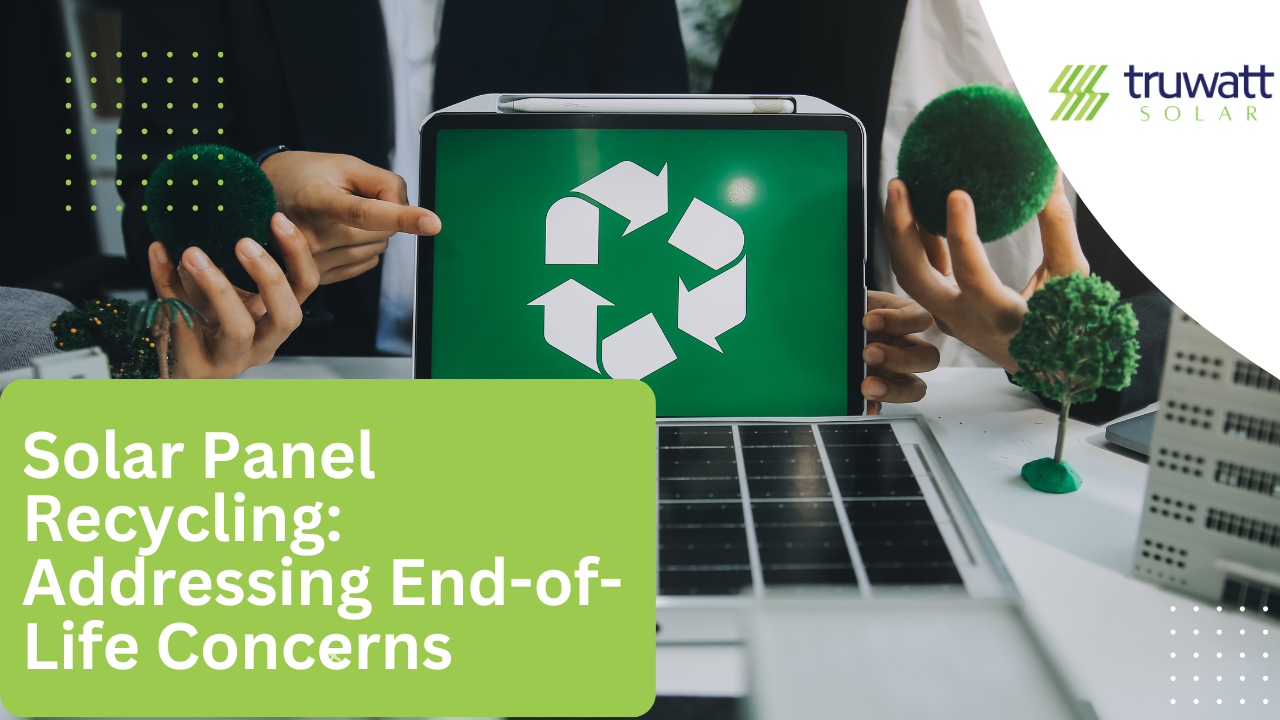
Solar Panel Recycling: Addressing End-of-Life Concerns
As the world increasingly embraces renewable energy, solar panels have become a cornerstone of sustainable energy production. With millions of panels installed globally, their contribution to reducing carbon emissions is undeniable. However, as these panels age and reach the end of their lifecycle, a critical question arises: what happens to solar panels once they’re no longer operational? The answer lies in solar panel recycling—a vital yet underdeveloped aspect of the solar energy industry.
The Challenge of Solar Panel Waste
Solar panels have a typical lifespan of 25 to 30 years. As installations from the early 2000s begin to reach their end-of-life stage, the volume of solar panel waste is projected to grow exponentially. According to the International Renewable Energy Agency (IRENA), global solar panel waste could reach 78 million metric tons by 2050. Without proper recycling infrastructure, these panels risk ending up in landfills, where hazardous materials like lead and cadmium can leach into the environment.
Composition of Solar Panels
Understanding the materials in solar panels is key to recycling them effectively. Most panels consist of:
- Glass: Making up about 70% of a panel's weight, glass can be recycled for use in new panels or other products.
- Aluminum Frames: Easily recyclable and valuable for producing new frames or other aluminum products.
- Silicon Cells: Contain high-purity silicon, which can be recovered and reused.
- Metals: Including silver, copper, and other trace metals, these components are valuable but require specialized processes to extract.
- Polymers and Adhesives: These materials often complicate the recycling process due to their difficulty to separate and low recyclability.
Current Recycling Processes
Solar panel recycling is still in its infancy, with many countries lacking standardized processes. However, some promising methods are emerging:
- Mechanical Recycling: Panels are shredded, and their components are separated using mechanical means. This method is straightforward but may result in lower material purity.
- Thermal Processes: Panels are heated to high temperatures to burn off adhesives and separate materials. This method is energy-intensive but effective for material recovery.
- Chemical Processes: Advanced techniques use chemicals to dissolve adhesives and recover high-purity materials like silicon and metals.
Barriers to Effective Recycling
Several challenges hinder the widespread adoption of solar panel recycling:
- Cost: Recycling solar panels can be more expensive than manufacturing new ones, making it less attractive to businesses.
- Regulatory Gaps: Many regions lack policies mandating solar panel recycling, leading to inconsistent practices.
- Technological Limitations: Current recycling technologies struggle with efficiently separating and recovering all materials, especially adhesives and polymers.
- Lack of Awareness: Many consumers and businesses are unaware of recycling options for solar panels.



Policy and Industry Initiatives
To address these barriers, governments and industry players are stepping up:
- Extended Producer Responsibility (EPR): Policies that make manufacturers responsible for the end-of-life management of their products are gaining traction in the EU and other regions.
- Research and Development: Investments in innovative recycling technologies aim to improve efficiency and reduce costs.
- Partnerships: Collaborations between manufacturers, recyclers, and governments are fostering the growth of recycling infrastructure.
The Future of Solar Panel Recycling
The solar industry’s growth depends on its ability to address end-of-life concerns sustainably. Developing efficient recycling systems is not just an environmental imperative but also an economic opportunity. Recovered materials can reduce the demand for raw resources, lower manufacturing costs, and create new jobs in the recycling sector.
Public awareness campaigns, stricter regulations, and continued innovation will be key to ensuring that solar panels remain a truly sustainable solution. By addressing end-of-life concerns proactively, the renewable energy industry can reinforce its commitment to a greener future—from cradle to grave.
Leave a Reply
Your email address will not be published. Required fields are marked*
